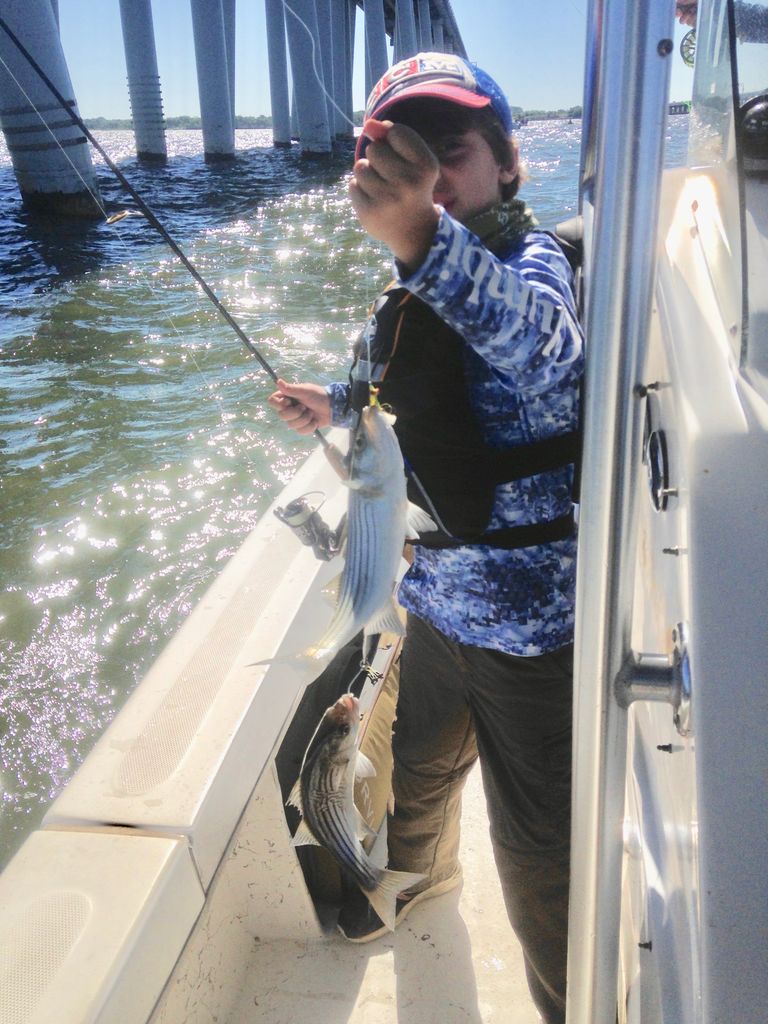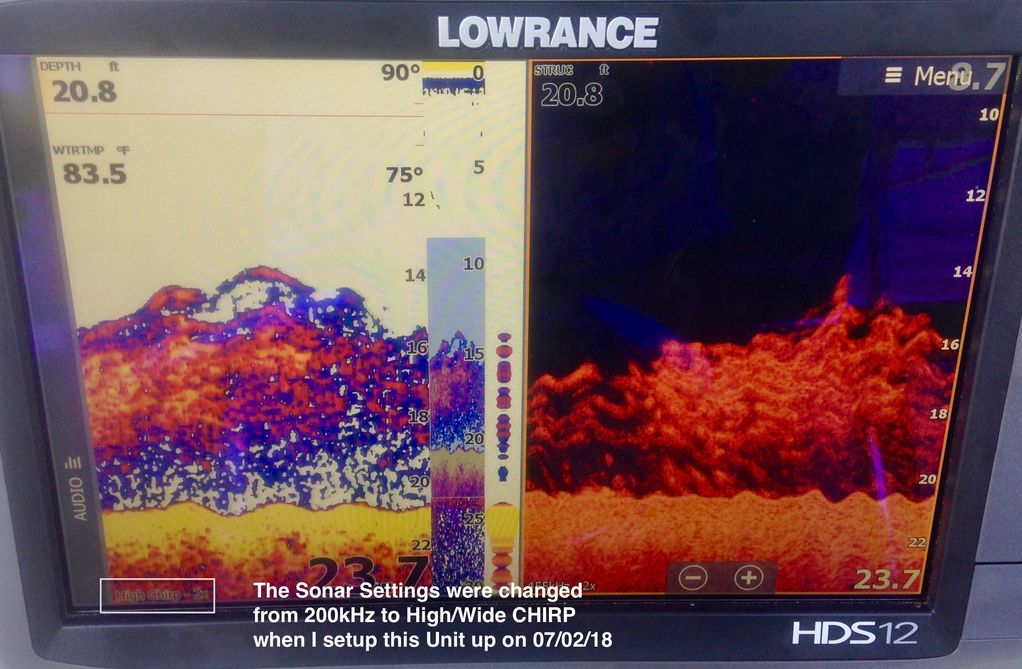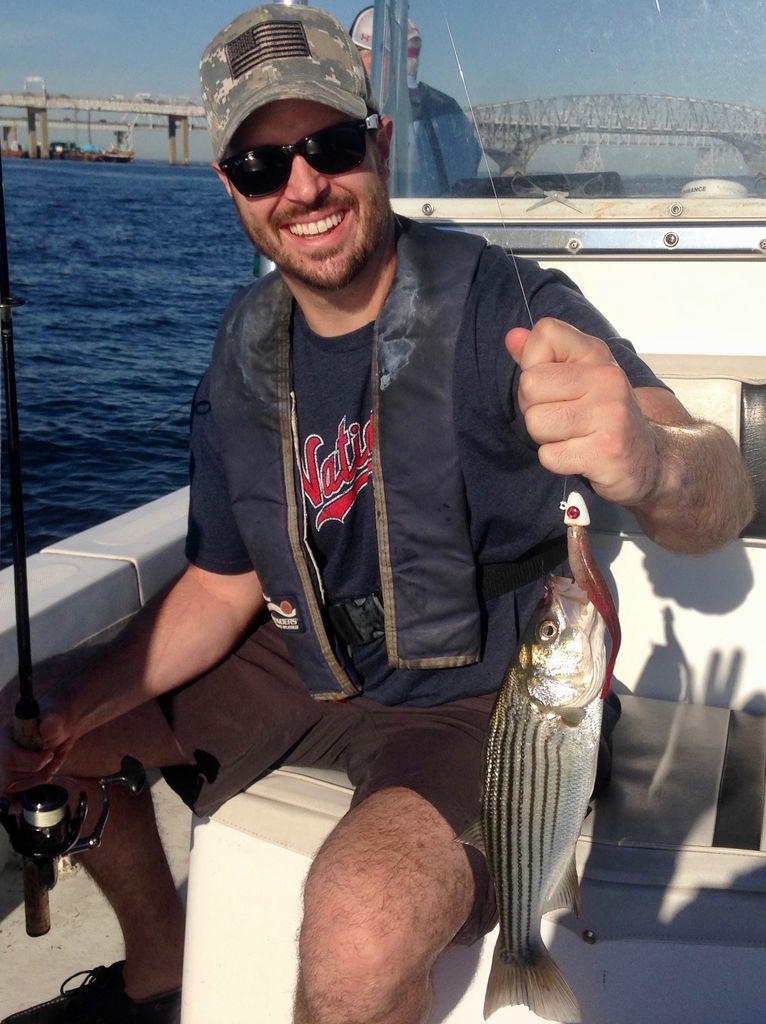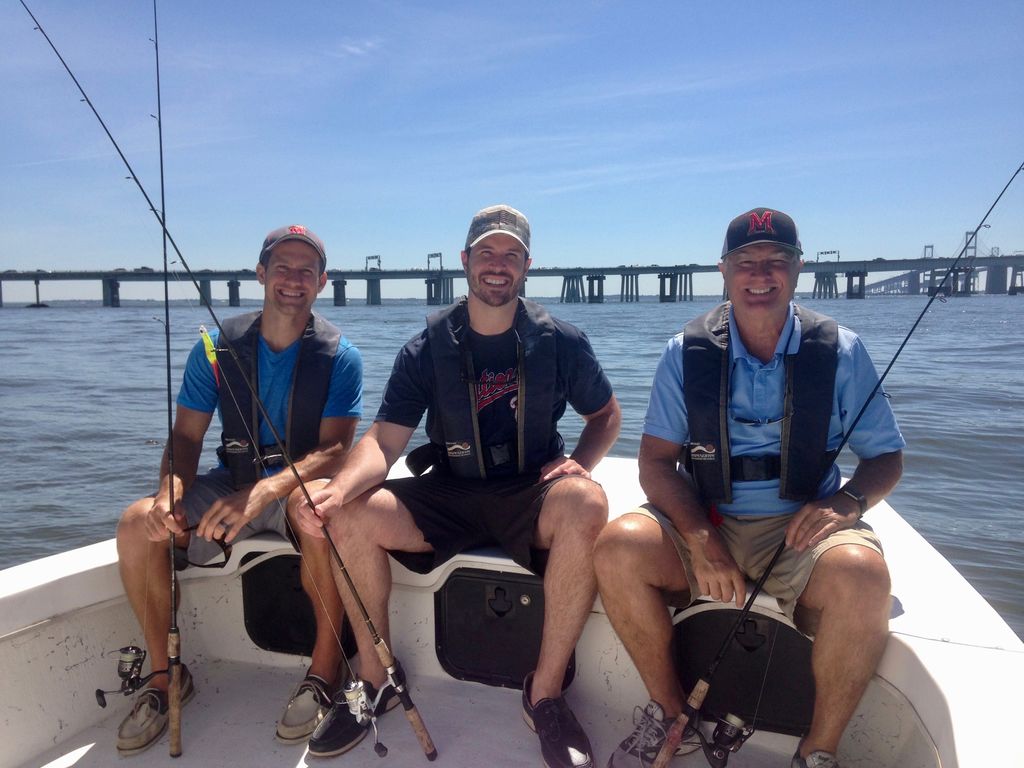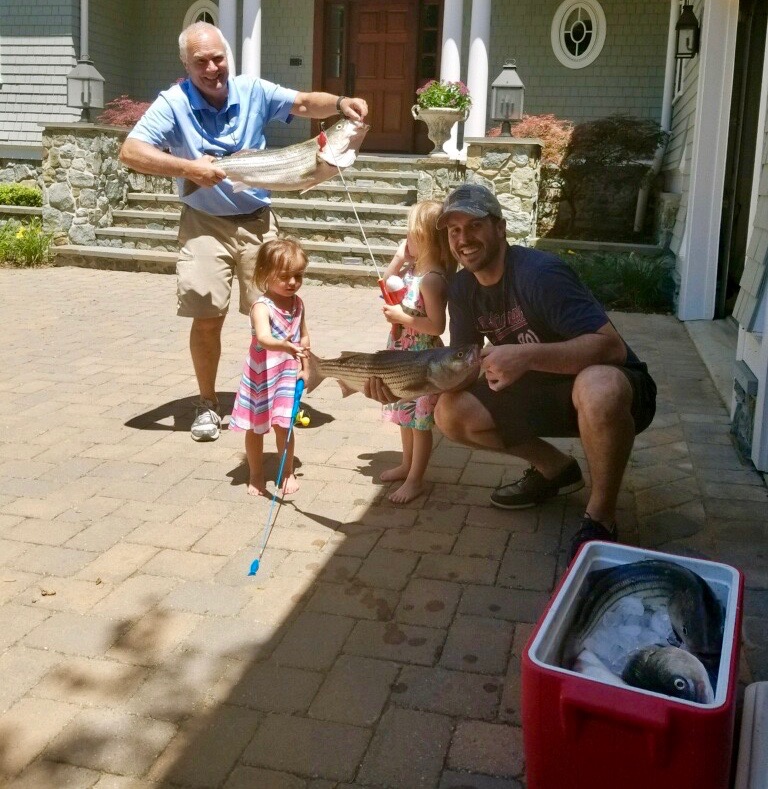He needed a casting lesson, which was part of the trip, so we moved away from the docks, but stayed in Mezick Pond. I rigged up a 9w saltwater series Orvis Helios Rod, teamed with a Mirage Large Arbor Reel that was spooled with floating line. During the casting lesson there was no fly attached to the leader. Once Steve understood the method and could cast around 30 foot of line, we stopped the lesson and headed for the fish.
It didn't take long before Steve caught his first ever striped bass on a fly.
Click on Picture to Enlarge
There were plenty blow-ups and watching Steve catch striped bass on topwater was exciting.
The Most Productive Topwater Fly: Blados Crease Fly in Gold with 1/0 hook.
The Most Productive Technique: Popping the Fly – Cast the fly out as far as possible. Move the rod tip down in sink with the line on your final forward cast. Start stripping immediately, in one to two foot increments, swiftly, when the fly hits the water. Do this until the fly is taken or back at the boat.
After lunch the ebb current was ripping out and we moved over water 45 foot deep. Steve had no trouble casting 350 grain sinking line. A 3 inch Clouser Minnow was attached at the end of a 4 foot leader of 20# test.
NOTE: Keep the leader short approximately 4 feet so the fly is in line with the sinking line.
Click on Picture to Enlarge
Steve was a swift learner and should have plenty of productive trips when fly fishing on the Chesapeake Bay in the future. 63 percent of the stripers and bluefish were caught on sinking fly line.













